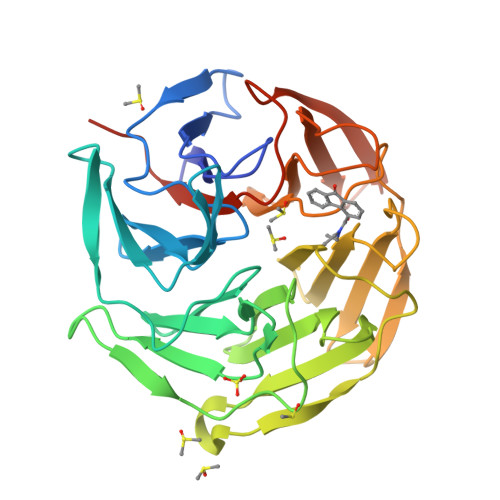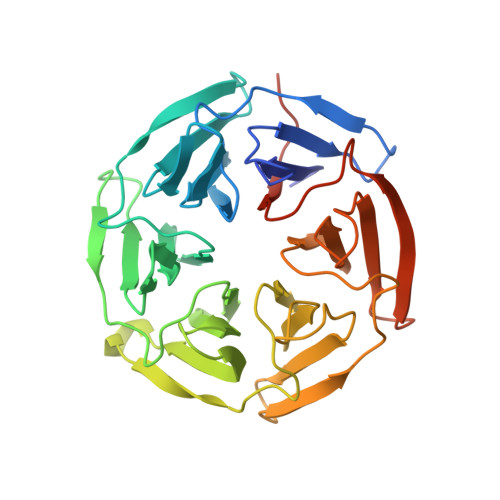Development of Noncovalent Small-Molecule Keap1-Nrf2 Inhibitors by Fragment-Based Drug Discovery.
Narayanan, D., Tran, K.T., Pallesen, J.S., Solbak, S.M.O., Qin, Y., Mukminova, E., Luchini, M., Vasilyeva, K.O., Gonzalez Chichon, D., Goutsiou, G., Poulsen, C., Haapanen, N., Popowicz, G.M., Sattler, M., Olagnier, D., Gajhede, M., Bach, A.(2022) J Med Chem 65: 14481-14526
- PubMed: 36263945
- DOI: https://doi.org/10.1021/acs.jmedchem.2c00830
- Primary Citation of Related Structures:
7OF8, 7OF9, 7OFA, 7OFB, 7OFC, 7OFD, 7OFE, 7OFF - PubMed Abstract:
Targeting the protein-protein interaction (PPI) between the transcription factor nuclear factor erythroid 2-related factor 2 (Nrf2) and its repressor, Kelch-like ECH-associated protein 1 (Keap1), constitutes a promising strategy for treating diseases involving oxidative stress and inflammation. Here, a fragment-based drug discovery (FBDD) campaign resulted in novel, high-affinity ( K i = 280 nM), and cell-active noncovalent small-molecule Keap1-Nrf2 PPI inhibitors. We screened 2500 fragments using orthogonal assays─fluorescence polarization (FP), thermal shift assay (TSA), and surface plasmon resonance (SPR)─and validated the hits by saturation transfer difference (STD) NMR, leading to 28 high-priority hits. Thirteen co-structures showed fragments binding mainly in the P4 and P5 subpockets of Keap1's Kelch domain, and three fluorenone-based fragments featuring a novel binding mode were optimized by structure-based drug discovery. We thereby disclose several fragment hits, including their binding modes, and show how FBDD can be performed to find new small-molecule Keap1-Nrf2 PPI inhibitors.
Organizational Affiliation:
Department of Drug Design and Pharmacology, Faculty of Health and Medical Sciences, University of Copenhagen, Universitetsparken 2, 2100 Copenhagen, Denmark.





















